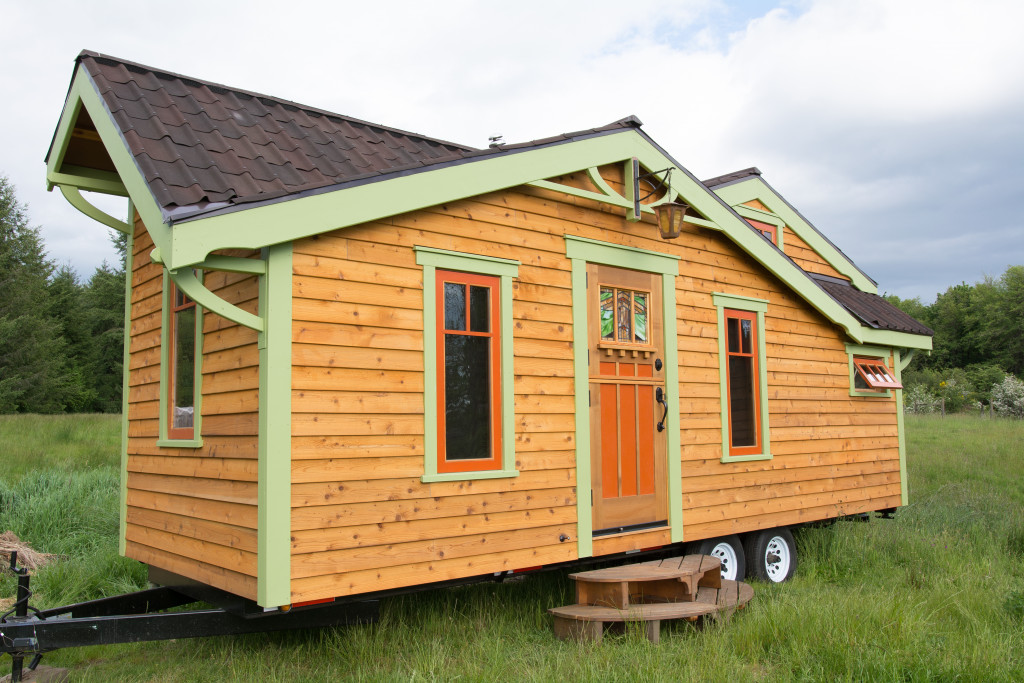When minimalism became a trend, many people started looking into tiny houses, and felt fascinated by how much they could store. With sizes of less than 400 sq ft, tiny houses are roughly as small as a closet. Yet, it could have all the necessary features of a home, such as a living room, a kitchen, a bathroom, a dining table, and a bed.
Storage doesn’t seem to be a problem too. Tiny houses usually have hidden compartments where you can keep your clothes and other belongings. But even if it couldn’t have the same storage capacity as big houses, tiny house dwellers don’t mind. With less room for their things, the less tempted they’d be to buy new stuff. And that’s exactly what tiny houses promote. The smaller your space, the lesser your needs. In the end, you’d save more money.
But despite the sustainability of tiny houses, living in one comes with challenges too. In fact, the hurdles could start right from the buying or building stage. Spending on something tiny doesn’t automatically guarantee an easier time. Hence, take note of these potential setbacks you may encounter when downsizing into a tiny house:
1. Hidden Costs
Reliable real estate tips always warn you about hidden costs. And buying a tiny house doesn’t exempt you from that warning.
The upfront costs of a tiny house depend on its size, amenities, finishes, and whether you’d buy one or build one. If you buy, your options are usually prefabricated houses made from container vans. Those houses in itself aren’t cheap. Good ones may cost around $70,000, and that’s just around 170-200 sq ft space.
Now, let’s identify the potential hidden costs. As with a larger house, a tiny house may also contain issues that’ll cost money to fix. For example, flimsy windows, faulty security features, or poor insulation. Installing fixes for any of those issues can add a few thousand bucks to your purchase price.
2. Zoning Laws
Whether you’re buying or building, zoning laws will pose a challenge. City and town zoning laws dictate a minimum size for every dwelling, or require a specific number of rooms. In Minnesota, for instance, any type of home must not go below the minimum ceiling clearances. It should follow ventilation and heating standards as well. Other areas, on the other hand, may require a single-family home to reach at least 1,000 sq ft.
3. Land Troubles
Aside from zoning laws, you may also encounter parking troubles in your chosen land. If you’d live in a trailer, some municipalities may not allow you to park in an area for extended periods. You’re lucky if you can find a property owner who will lease out their vacant lot for your trailer. But if that’s not an option, find out if your municipality allows its people to use a trailer as a primary residence. Some municipalities allow people to park their trailers, but forbid them from living in it primarily, so get familiar with the local laws.
4. Getting Insurance
Insurance companies set expectations for homeowners before giving them a policy. If a house is inefficient because it uses coals instead of a stove, for example, they may deny it coverage, because coals aren’t sustainable and environmentally-friendly.
Basically, insurers prefer to cover homes that will last and withstand the elements. So if your tiny house doesn’t have a foundation, goes against the building codes, or doesn’t have electricity, chances are you’d struggle to get coverage for it.
5. Your Future Plans
If you live alone now, do you plan on getting married soon? What about having kids? Any life changes that involve multiplying your needs will affect your life in a tiny house. Even your career. For example, if you become a design professional that needs a sophisticated ensemble of gadget and tools, your tiny space might not suffice.

Signs That You Should Live in a Tiny House Nonetheless
Buying a house will never be easy anyway, so if the setbacks above don’t deter you, check if the following signs apply to you as well:
1. A Minimalist Lifestyle Suits You
If you know the realities of a minimalist lifestyle, but still find it appealing and suitable for you, then a tiny space will not likely challenge you.
2. Your Prefer Simplicity
When luxurious material possessions and experiences no longer impress you, living with whatever nature provides will feel like the most indulgent treat.
3. You Want To Change Locations Often
In other words, you crave a nomadic lifestyle. You want your home and office to sit on wheels, even if it means constantly adjusting and moving away from friends and acquaintances.
4. You Want to Reduce Your Debts
A tiny house spares you the burden of mortgages and car loans. You may not live totally debt-free, but having no financial obligations that may take 30 years to complete is a huge difference.
Setbacks are inevitable in life, so if living in a tiny house is really your biggest goal, don’t let the hurdles hold you back. Life is too precious to delay the fulfillment of your dreams, so go and downsize as soon as you’re ready.

